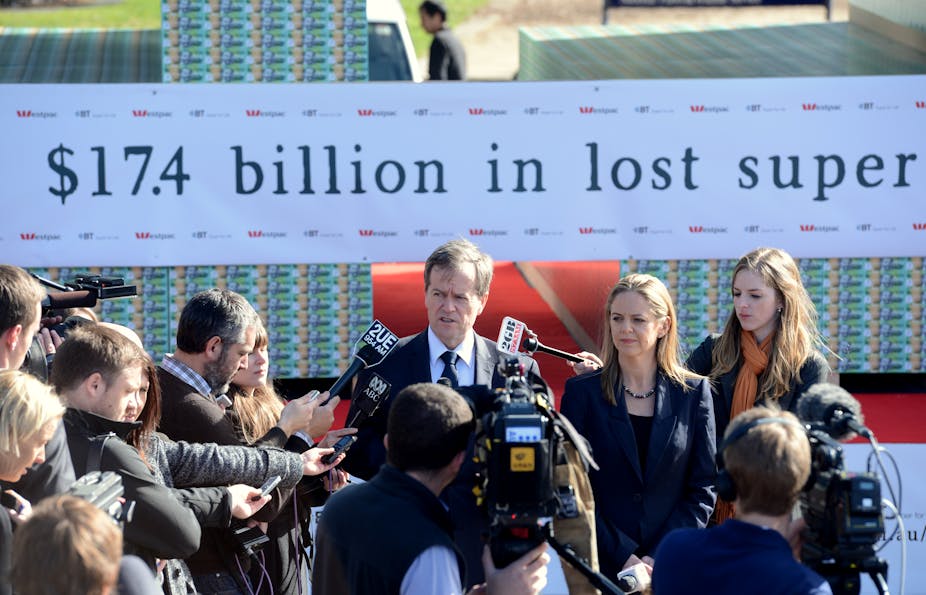Australia’s approach to retirement incomes policy has three pillars. The first pillar is the means-tested age pension, which dates from 1909, and is intended to provide a safety net should the other pillars fail to provide a minimum standard of living in retirement.
The second pillar is compulsory superannuation through the superannuation guarantee (SG), which has been in place since 1992, and was preceded by the growth in award-based superannuation from 1986.
The third pillar is voluntary saving, which includes saving via superannuation over and above that mandated by the SG.
The federal government, with the support of the opposition, has undertaken to increase compulsory SG contributions from the current 9% to 12% by 2019–20. The increase will be phased in with annual increments of 0.25 percentage points from 1 July 2013. In this context, it is timely to re-examine the economic case for compulsory superannuation.
Compulsory super is a little questioned feature of Australian retirement incomes policy, yet it is partly a legacy of an earlier era of public policy characterised by centralised wage fixing and monetary policy that was not focused on controlling inflation.
The introduction of award-based superannuation in 1986 explicitly traded off increases in take-home pay for superannuation contributions in an industrial relations system at risk of a wages breakout and inflationary wage-price spiral. Award-based superannuation was a mechanism for managing demands for wage increases that might otherwise have been destabilising for the economy.
The introduction of the SG in 1992 followed the failure of the then Australian Industrial Relations Commission (AIRC) to support an increase in award superannuation when the unemployment rate was in double digits.
The SG was also introduced before the formal introduction of inflation targeting by the Reserve Bank of Australia in August 1996. The Reserve Bank’s failure to provide the Australian economy with a nominal anchor until the mid-90s meant that monetary policy was more likely to accommodate inflation pressures arising from the labour market.
The shift to enterprise bargaining since 1991 and the decline in union membership as a share of the workforce, together with the adoption of a formal inflation target, have resulted in a more decentralised labour market, wages more closely tied to productivity, and a less inflation-prone economy.
The scope for wage demands to spill over into increased inflation and unemployment has been reduced by these institutional changes.
Compulsory superannuation has outlived some of the institutional arrangements on which it was originally conditioned. However, it was primarily motivated by the desire to improve household saving and retirement incomes, marking a major shift in the focus of retirement incomes policy from poverty alleviation through the age pension, a legitimate focus of government policy, to income maintenance, implying an expanded role for government.
The economic rationale for compulsory superannuation has changed along with the institutional landscape.
Compulsory superannuation was initially motivated by macroeconomic concerns, particularly the perceived need to lift Australia’s national saving performance and to narrow the current account deficit. The macroeconomic rationale for compulsory superannuation has since shifted to concerns about intergenerational equity and long-term fiscal solvency.
The main issue for public policy is whether compulsory superannuation is the best way to secure the objectives of improving retirement incomes and reducing future demands on the budget from an ageing population relative to other policy options.
On current projections, the mature compulsory superannuation system will have only a modest impact on future age pension eligibility, augmenting rather than replacing the age pension, while still leaving a large fiscal gap.
This could be taken as argument for further increases in the SG contribution rate, as currently proposed by the federal government and supported by the opposition. However, the fiscal implications of population ageing can only be addressed through comprehensive tax and expenditure reform. The danger is that further increases in the compulsory contribution rate become a politically convenient but ineffective substitute for such reforms, especially given the absence of compulsion in the decumulation stage of retirement saving to prevent double-dipping.
Addressing adverse interactions within the three pillars and between the three pillars and the tax system is a preferable policy approach to further increases in the compulsory contribution rate. In particular, raising and aligning the preservation and age pension eligibility age, moving the taxation of super back to an expenditure tax basis combined with the mandatory annuitisation of retirement benefits receiving expenditure tax treatment would lift retirement incomes and reduce future demands on the budget in a more transparent, equitable and politically robust way than further increases in the compulsory contribution rate.
Public policy should aim to merge the second and third pillars of retirement incomes policy into a single pillar built around tax-advantaged, long-term voluntary saving via housing and superannuation.

